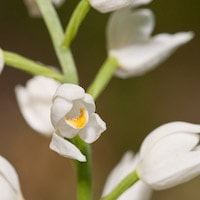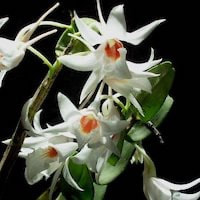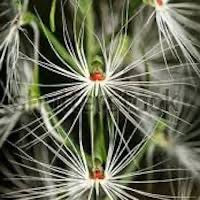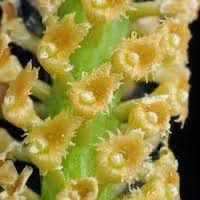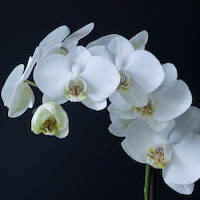WWD9 - Women's Woody 9 - Why So Serious?
|
Native Singaporean Orchid notes: Cattleya Gaskell-pumila 'Azure Star'
Cattleya Gaskell-pumila 'Azure Star' is a captivating orchid hybrid celebrated for its beautiful appearance and enchanting fragrance. Its light blue sepals and petals, accented with deeper blue tips and a yellow-toned throat, create an elegant flower. Emitting a sweet and floral scent upon blooming, it adds sophistication to the olfactory experience. Despite its compact size, it produces abundant flowers suitable for indoor and outdoor cultivation. Used in the "Woody 9 (Women)" perfume blend, its fragrance harmonizes with woody notes, offering a balanced and memorable olfactory journey during the Team Building Perfume Workshop.
|
Therapeutic Orchid notes:
|
Anacamptis laxiflora
Anacamptis laxiflora, known as the Jersey Orchid, is a culturally and historically important orchid species found across Europe and Asia, including India where it's called "Salep misri" or "shala misriri." This orchid's tubers have been traditionally used for their medicinal properties as an expectorant and astringent. In India, they were also valued for making "salep," a beverage believed to have aphrodisiac qualities. Despite its significance, the species faces threats like habitat loss and over-collection, underscoring the need for conservation efforts to preserve its cultural and ecological value. |
|
Cephalanthera longifolia (L.) Fritsch.
Cephalanthera longifolia, known as the Long-Leafed Helleborine, is a notable orchid species with elongated leaves, earning it Chinese names like "Changyetourui Lan" and "Tourui Lan." It contains various phytochemicals including alkaloids and flavonoids like quercetin and kaempferol-O-glycosides. In Traditional Chinese Medicine, its roots and stems are used to treat conditions like nocturesis and enuresis. Conservation efforts are crucial as related species like Cephalanthera falcata show antibiotic potential but are endangered due to habitat loss and over-collection, highlighting the need to protect their ecosystems and biodiversity. |
|
Dendrobium draconis Rchb.f.
Dendrobium draconis Rchb.f., known as the "Ueang ngoen" and "Ueang ngum" in Thailand and "Kein na ri" in Myanmar, is a captivating orchid species admired for its delicate white flowers. Research on this orchid has revealed gigantol, a bibenzyl with cytotoxic properties against cancer cells, enhancing its botanical significance. In Thai traditional medicine, its stem is used as an antipyretic to reduce fever and a haematinic to improve blood health. These findings underscore the orchid's cultural importance and potential in medicinal applications, urging efforts to conserve and explore its benefits further. |
|
Habenaria limprichtii Schltr.
Habenaria limprichtii Schltr., known as "Kuanyaogeyufeng Hua" in Chinese, is a robust terrestrial herb with large, lanceolate floral bracts and light green sepals. It blooms from June to August in China and July to August in Thailand, thriving in thickets and grasslands in northern Thailand. In traditional Chinese medicine (TCM), it is used to nourish feminine health and treat nephritis and renal function. Studies have highlighted its phytoestrogenic compounds, which mimic mammalian oestrogens and influence hormonal balance. This research underscores its potential in TCM and broader health applications, emphasizing the intersection of natural resources and human well-being. |
|
Oberonia falconeri Hook f.
Oberonia falconeri Hook f., known as "Kanchapra" in India, is a notable orchid species found across India, China, Bangladesh, Myanmar, Thailand, and Malaysia. It's renowned for its medicinal use in treating fractures in the Indian Himalayas. The plant's unique botanical features, such as its vibrant floral structures, reflect its diverse habitat adaptability. However, its widespread use raises conservation concerns due to habitat loss and climate change. Balancing traditional medicine with conservation efforts is crucial to preserving Oberonia falconeri and its natural habitats for future generations. |
|
Phalaenopsis amabilis (L.) Blume and Phalaenopsis aphrodite (L.) Blume)
Phalaenopsis amabilis (L.) Blume and Phalaenopsis aphrodite (L.) Blume, commonly known as the "Moth orchid," are epiphytic orchids admired for their elegant appearance and cultural significance. Named for their resemblance to moth flight, they are called "Anggerik bulan" or "moon orchid" in Indonesia and "Tapak Djalak" in the Sunda Islands, with historical records dating back centuries. These orchids feature robust growth with short stems, large leaves, and captivating blossoms from February to May. Their phytochemical composition includes Phalaenopsine La, contributing to their appeal in ornamental horticulture and traditional uses like poultices for headaches and insect repellent in India. Conservation efforts are vital due to threats from habitat loss and overharvesting, aiming to safeguard these orchids for future generations amidst their cultural and ecological significance. |
Other scent note
Scentopia Library Reference ingredient
Pomegranate - Check details at Scentopia's scent library
Download the guided mediation that works best with this Orchid fragrance oil
| women_woody_essential_oil_orchi_00009.mp3 | |
| File Size: | 91470 kb |
| File Type: | mp3 |


